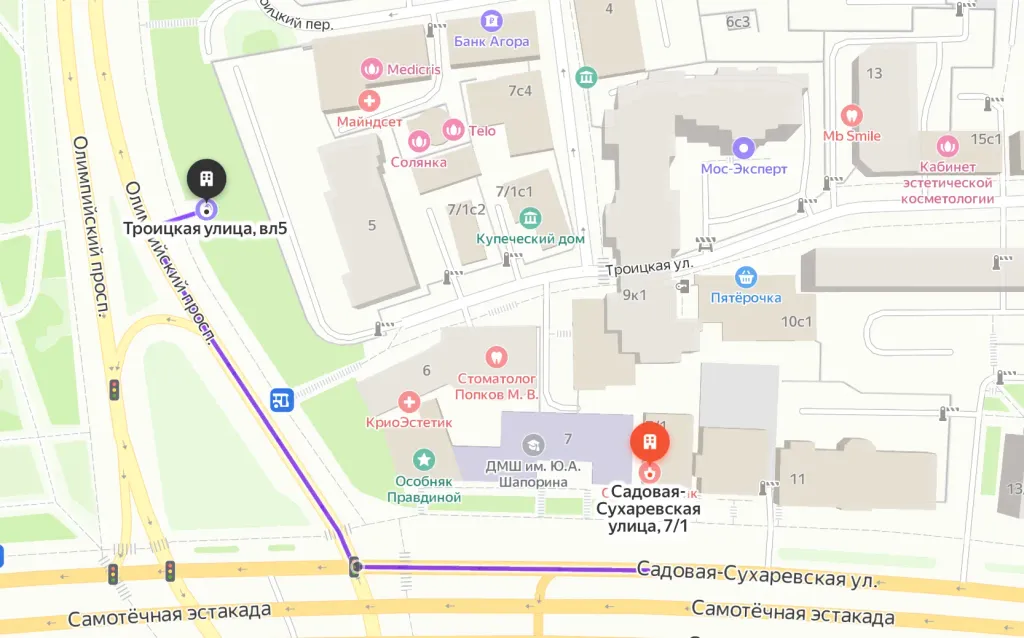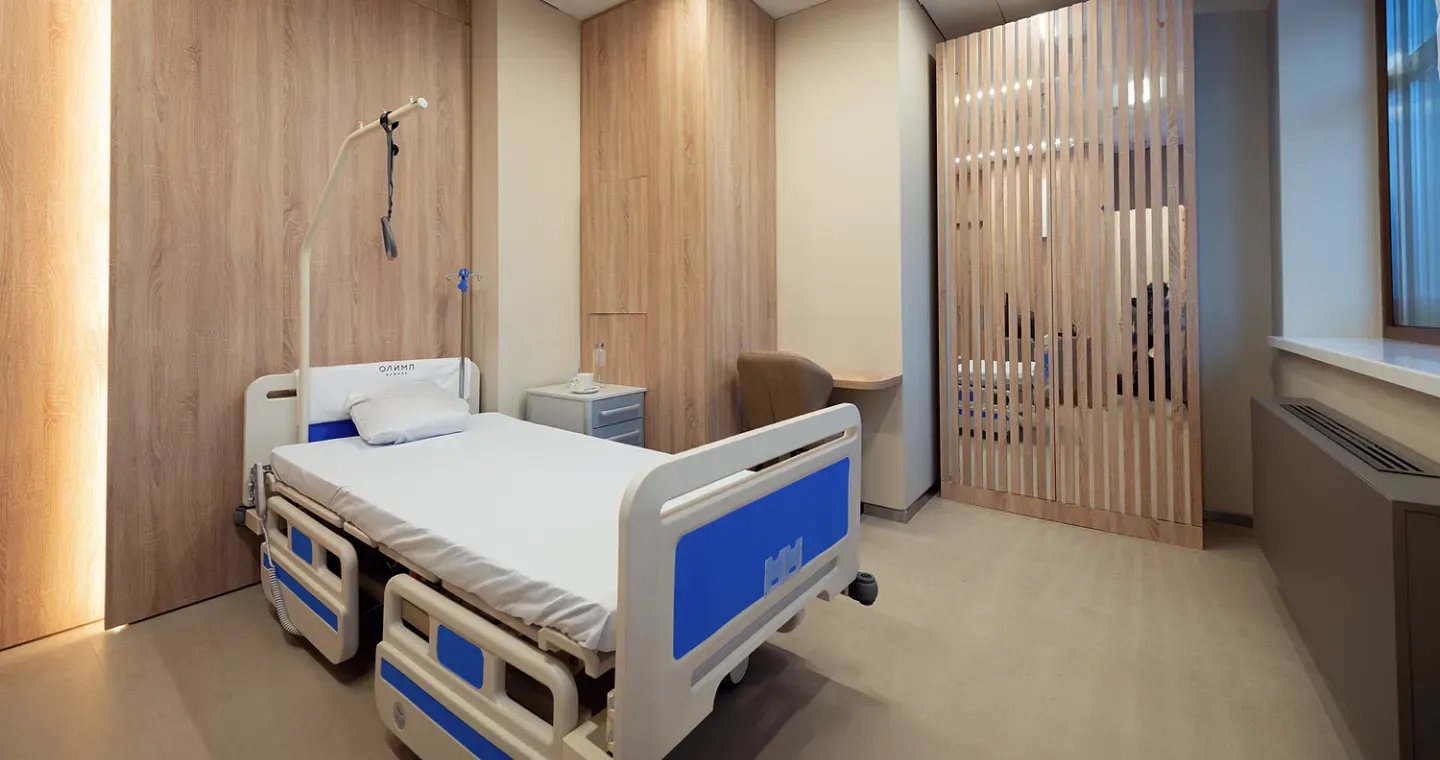Treatment of cervical dysplasia
A pathological condition in which the cells covering the cervix change and acquire signs of atypia. This condition can lead to the development of cervical cancer if it is not diagnosed and cured in a timely manner.

The disease is most often asymptomatic, and women may not be aware of its presence, so regular gynecological examinations and HPV screening are crucial for the prevention and early detection of pathology.
The main risk factor for dysplasia is infection with oncogenic HPV types, but the onset of the disease can also be influenced by early onset of sexual activity, frequent change of partners, smoking, prolonged use of oral contraceptives and weakened immunity. Diagnosis of cervical dysplasia is performed using a PAP test (cytology), HPV testing and colposcopy with biopsy (under local anesthesia). Treatment of dysplasia depends on the degree of lesion. With CIN I, dynamic monitoring is often carried out (no more than 1.5-2 years), since young women (up to 30 years old) with normal immune function may have an independent regression of the disease. With the preservation of CIN I for more than 2 years, CIN II and CIN III, or the progression of dysplasia, surgical intervention is indicated.
PAP test (cytological examination of a smear from the cervix) HPV testing to identify oncogenic virus types Colposcopy with biopsy of suspicious areas of the cervix A general blood test and tests for sexually transmitted infections Upon admission to the hospital, the following are required: Fluorography or chest X-ray Electrocardiography Laboratory examinations: general blood test, biochemical blood test, coagulogram, blood tests for hepatitis B and C, syphilis, HIV, smear for purity and smear for oncocytology from the cervix Determination of blood type and Rh factor
For the treatment of CIN I, excision is performed, — removal of the affected area of the cervix, or laser ablation — destruction of the affected tissue. Ablation is performed under local anesthesia and requires a lot of preparation. Excision or conization of the cervix is used in the treatment of severe forms of dysplasia (CIN II and CIN III). The choice of method depends on the degree of cervical lesion, the age of the patient and her plans for childbirth. Cervical conization is the most common operation in which the cone—shaped part of the cervix containing pathological cells is excised. The procedure allows not only to remove dysplastic cells, but also to conduct a histological examination of tissues to confirm the diagnosis. Excision and conization of the cervix is recommended to be performed under medical sleep, for the comfort and safety of the patient. Hospitalization in a hospital for several hours is required.
Radio wave knife or electric loop to perform conization or LEEP Laser equipment for ablation of the affected tissue Colposcope with high-resolution optics for accurate determination of lesion boundaries and treatment direction
After surgical treatment of cervical dysplasia, it is recommended to refrain from sexual intercourse and the use of tampons for 4-6 weeks. Physical activity should also be limited for this time. Minor spotting during the first 2-3 weeks after surgery is normal. It is important to undergo regular follow-up examinations, including a PAP test and HPV testing, every 6 and 12 months to rule out a recurrence of the disease.
Benefits
Effective cancer prevention
Surgical treatment of dysplasia significantly reduces the risk of cervical cancer in patients with CIN II and CIN III.
Minimally invasive methods
Ablation and conization are minimally invasive procedures that help preserve the cervix and minimize the risk of complications.
Preservation of reproductive function
Treatment of cervical dysplasia, especially in young women, is carried out with minimal impact on the reproductive organs, which allows you to preserve the ability to procreate.
Fast recovery
After treatment of dysplasia, the patient recovers quickly and can return to normal life within a few weeks.
Specialists
Find a SpecialistSimilar referral activities
Consultation of a gynecologist
Medical examination aimed at diagnosing, treating and preventing diseases of the female reproductive system.
Reproductive surgery
Surgical treatment and simultaneous accurate diagnosis of female infertility factors: adhesions, endometriosis, congenital malformations of the genital organs, obstruction of the fallopian tubes, intrauterine pathology (septum and synechia), polycystic ovary syndrome.
Treatment of vulvar diseases
Vulvar diseases, including chronic fissures, sclerotrophic lichen and other dermatological conditions. We offer modern and effective treatment methods aimed at reducing symptoms and restoring the normal condition of the vulva skin.
Correction of menopause problems
The onset of menopause is often accompanied by a number of physical and mental manifestations unpleasant for a woman. The gynecologist will choose therapy, which can relieve or completely eliminate the symptoms.
PRP-therapy with plasma in gynecology
Plasma therapy helps to eliminate dryness, atrophy of the vaginal mucosa by activating cell regeneration, collagen synthesis, and attraction of intercellular fluid.
Vulvoscopy and colposcopy
Instrumental gynecological examinations that help to identify and detect pathology of the female genital organs in the early stages.
How to reach
How to get
From the Belorusskaya metro station of the Zamoskvoretskaya line - exit 4 After exiting the subway, walk through the pedestrian tunnel and climb the stairs. Move towards the railway tracks, go down the stairs immediately after them and walk along the house, then turn right onto 1st Yamskoye Pole Street. At the turn to 3rd Yamsky Pole Street, cross the road at the pedestrian crossing and continue along 1st Yamsky Field Street, after a few buildings on the left you will see Olympus Clinic MARS.
Travel time
9 minutes
Landmark
Olympus Clinic MARS sign
How to get
From the Belorusskaya metro station of the Ring line - exit 2. After exiting the subway, turn left and walk to the pedestrian crossing. Cross the road through two pedestrian crossings and move along the Tverskoy overpass. Go down the stairs immediately after the railway tracks, walk along the house, then turn right onto 1st Yamskoye Pole Street. At the turn to 3rd Yamsky Pole Street, cross the road at the pedestrian crossing and continue along 1st Yamsky Field Street, after a few buildings on the left you will see Olympus Clinic MARS
Travel time
11 minutes
Landmark
Olympus Clinic MARS sign
From the metro station "Tsvetnoy Bulvar"
1 exit to the city, then left to the Garden Ring, at the crossing to the right, crossing the boulevard, one more crossing and at the traffic light to the left. The Olymp Clinic building is located overlooking the Garden Ring to the right of the crossing. Travel time is approximately 9 minutes. Landmark - sign Olymp Clini
From the metro station "Sukharevskaya"
Exit 3 from the metro and 640 meters straight ahead, the clinic will be on the right. Landmark - sign Olymp Clinic
Parking lot map
Exit 3 from the metro and 640 meters straight ahead, the clinic will be on the right. Landmark - sign Olymp Clinic

From Sokol metro station
The last car from the center: follow the signs for Exit 5. From the glass doors to the right and go to the end of the passage. Exit to the city by the steps to the left. After exiting the crossing to the street, go straight along Leningradsky Prospekt to the intersection with Chapaevsky Lane. Next, turn right (onto Chapaevsky Lane) and walk to the Triumph Palace residential complex. Entrance to the territory: through checkpoint No. 1, opposite the Vkusville store, you will need to present your passport. After passing through the checkpoint, go up the stairs to the fountain, opposite it you will see our clinic.
Travel time
10-12 minutes
From the Airport metro station
The first car from the center: follow the Exit 2-3 signs. Turn left out of the glass doors and walk to the end of the passage. After exiting the crossing to the street, go straight along Leningradsky Prospekt to the intersection with Chapaevsky Lane. Next, turn left (onto Chapaevsky Lane) and walk to the Triumph Palace residential complex. Entrance to the territory: through checkpoint No. 1, opposite the Vkusville store, you will need to present your passport. After passing through the checkpoint, go up the stairs to the fountain, opposite it you will see our clinic.
Travel time
12-15 minutes
How to get
Entry to the territory is prohibited, but there are free city parking lots around the Triumph Palace residential complex, where you can easily find a place for your car. Free parking area:






